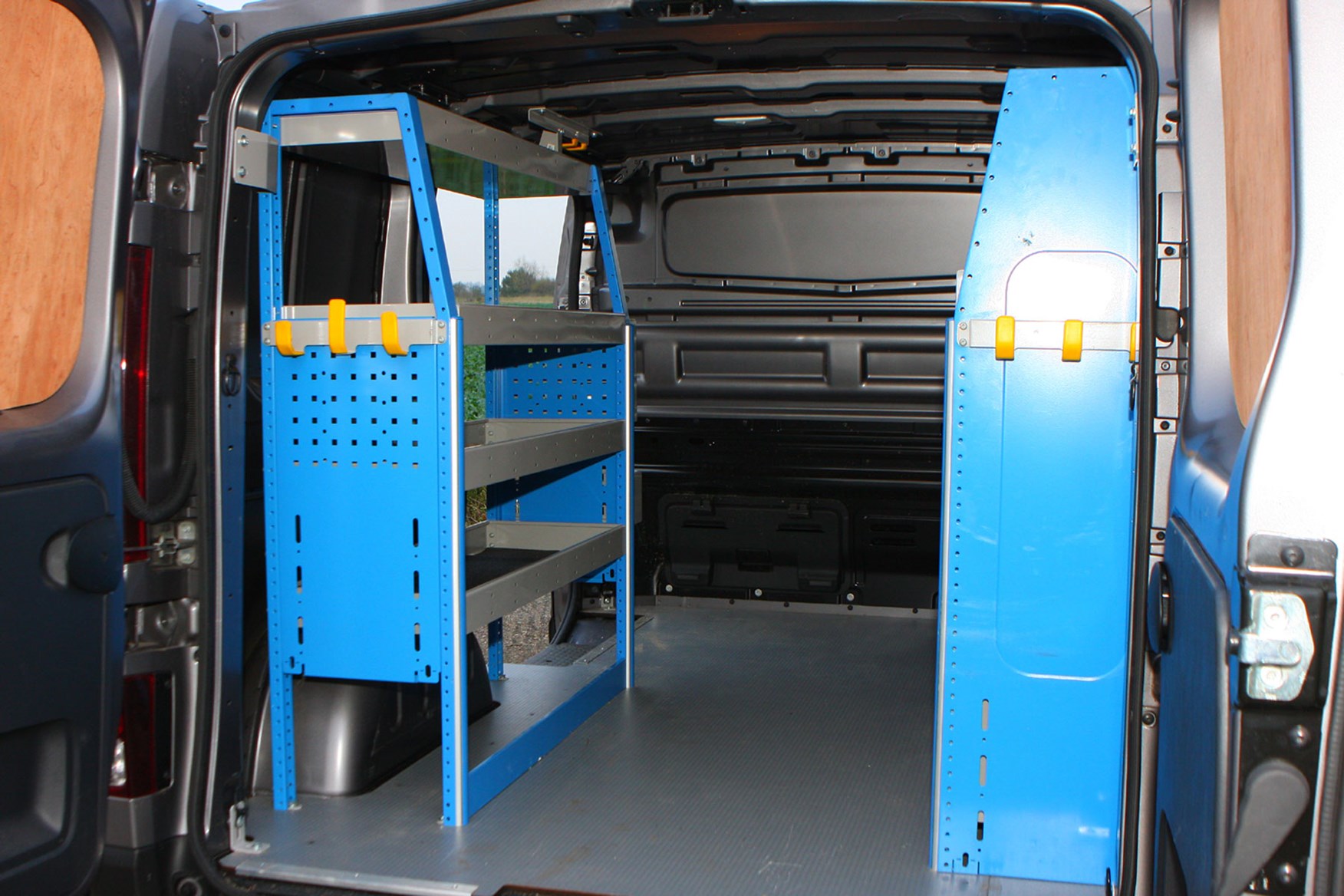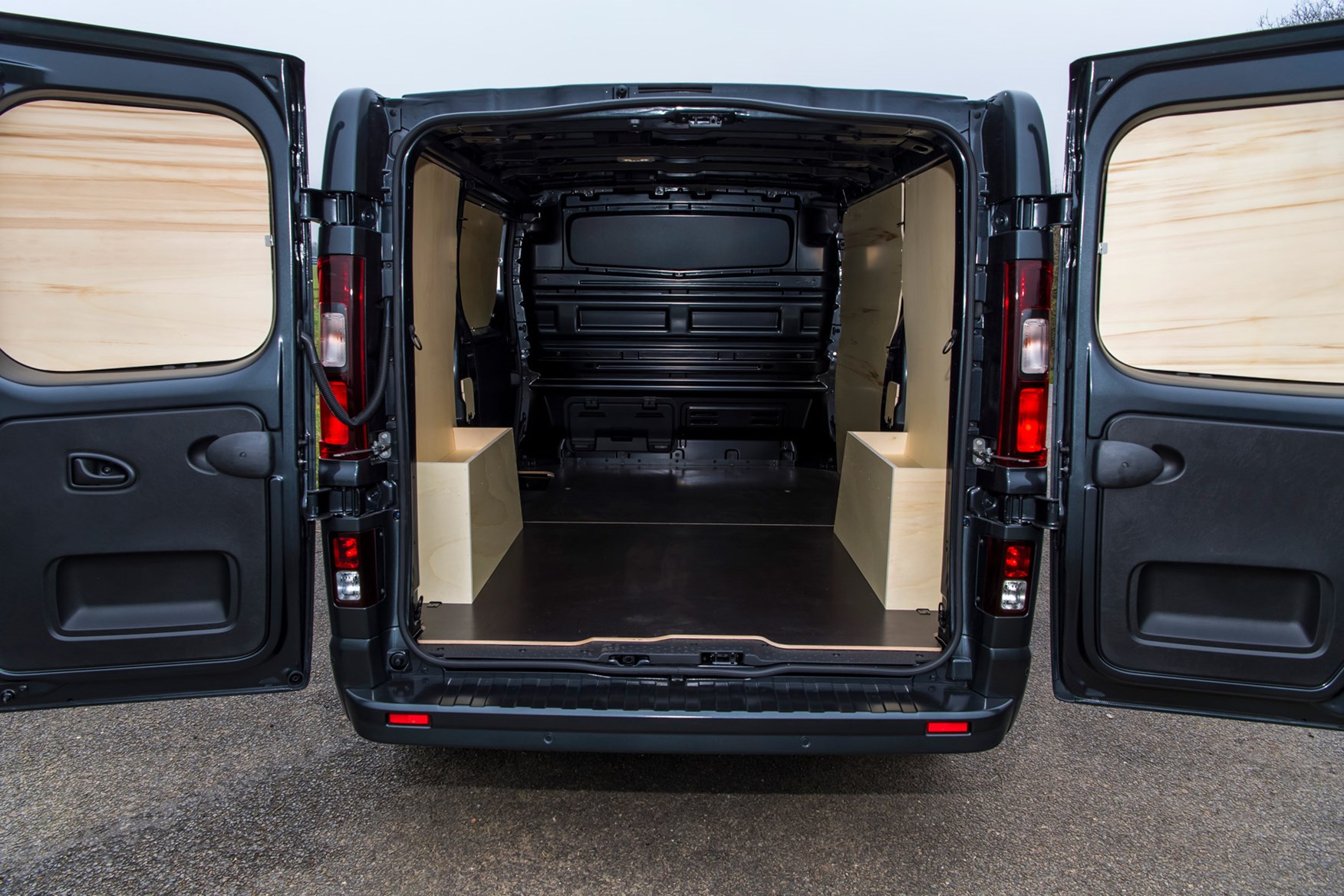Renault Trafic dimensions (2014-on)
On this page you'll find dimensions info for the Renault Trafic launched in 2014, and updated in 2022 with a comprehensive facelift (which has made it slightly longer). Details covered here include the load space, towing capacity and payload ratings.
For find out what the Trafic is like to drive, what equipment you get as standard, its running costs and its value, see our main Renault Trafic review page.
The Trafic comes in two lengths and two heights. Short-wheelbase (SWB) models were originally designated S, long-wheelbase models (LWB) were designated L, while the roof heights were labelled L for low and H for high.
So a Renault Traffic SH is a SWB high-roof model, a Trafic LL is a LWB low-roof model, and so on.
Following an update in 2019, however, Renault has moved towards using the more traditional L1 and L2 labels for length, and H1 and H2 labels for height.
It's pretty straightforward to work out what you're looking at, either way.
What's the load area like in the Renault Trafic?
While it doesn't have the highest payload ratings, Renault has certainly put plenty of thought into the Trafic's load area – from flaps in the bulkhead for longer items to a vast number of lashing points as standard, this is a versatile van right out of the box.

Add a number of custom racking options that can be installed before delivery by the Renault Tech team, an optional internal roof rack and high-quality Renault Tech interior lining packages, and the Trafic is a van you can put straight to work.
LED lighting was added in 2019, brighter than the conventional lights previously fitted, making it easier to see inside.
But will your gear or goods fit? Let’s find out.
Renault Trafic exterior dimensions
First things first, will it fit on your drive? The LWB version is 400mm longer than the SWB model, which is just over five metres in length. This follows a slight increase of 80mm with the 2022 facelift.
Full exterior dimensions for the 2022 New Trafic are listed in the table below:
| Renault Trafic variant | SL / L1H1 | SH / L1H2 | LL / L2H1 | LH / L2H2 |
| Exterior length (mm) | 5,080 | 5,480 | 5,080 | 5,480 |
| Exterior height (mm) | 1,971 | 2,495 | 1,976 | 2,498 |
| Exterior width without mirrors (mm) | 1,956 | 1,956 | 1,956 | 1,956 |
| Exterior width with mirrors (mm) | 2,283 | 2,283 | 2,283 | 2,283 |
| Wheelbase (mm) | 3,098 | 3,098 | 3,498 | 3,498 |
| Front overhang (mm) | 1,014 | |||
| Rear overhang (mm) | 968 | |||
| Side door max width (mm) | 1,030 | |||
| Side door min width (mm) | 907 | |||
| Side door height (mm) | 1,284 | |||
| Rear door width (mm) | 1,255-1,320 | |||
| Rear door height (mm) | 1,320 | |||
| Rear sill height (mm) | 552 | |||
| Ground clearance (mm) | 160 | |||
Note that if viewing on a phone you may have to turn the screen sideways to see the whole table
The Trafic is also available as a crew van (with a second row of seats); previous this was available in both body lengths but now only a long-wheelbase model is offered in the UK. The exterior dimensions are the same as the panel van.
Renault Trafic load area dimensions
Even the shortest version of the Trafic has enough floor space for three Euro pallets. You get a single sliding side door on all models (a second is optional), and no less than 16 floor-to-ceiling lashing points on SWB models; there are 18 on LWB versions.
Longer loads up to 4,150mm can be accommodated via a load-through flap in the bulkhead and a lift-up passenger seat, which allows items such as pipes to extend all the way through into the passenger footwell. This is standard fit from the Business+ trim level upwards.
The full Renault Trafic load space dimensions are listed in the table below:
| Renault Trafic van variant | SL / L1H1 | SH / L1H2 | LL / L2H1 | LH / L2H2 |
| Maximum load length (mm) | 2,537 | 2,537 | 2,937 | 2,937 |
| Maximum load height (mm) | 1,387 | 1,898 | 1,387 | 1,898 |
| Maximum load width (mm) | 1,662 | 1,662 | 1,662 | 1,662 |
| Width between wheelarches (mm) | 1,268 | 1,268 | 1,268 | 1,268 |
| Maximum load volume (cu m) | 5.8 | 7.8 | 6.7 | 8.9 |
The Trafic crew vans have smaller load areas due to the extra seats reducing the loading length:
| Renault Trafic crew van | LL / L2H1 |
| Maximum load length (mm) | 2,314-2,423 |
| Maximum load volume (cubic metres) | 4.0 |
Fair to say, payload and towing capacity are not Renault Trafic's strongest areas.
Renault Trafic payload details
The Renault Trafic’s maximum payload is limited by its relatively low gross vehicle weight options (GVW – the total legal combined weight of van and everything inside) compared with the heaviest-hauling rivals, such as the Ford Transit Custom, and the latest Vauxhall Vivaro and its close family, the Citroen Dispatch, Peugeot Expert and Toyota Proace.

Before the 2019 facelift, the two GVW options were labelled 27 and 29 - roughly equivalent to 2,700kg and 2,900kg. After the 2019 and continuing for the more recent 2022 update, these have been changed to 28 and 30, again roughly equivalent to 2,800kg and 3,000kg.
Even so, the most a Trafic can carry is 1,280kg in the strongest pre-2019 LL29 variant. This applies to all four engines, though, so you are not restricted to the most powerful and therefore most expensive version if carrying more is a priority.
For the 2022 facelift, maximum payload for UK models is 1,166kg, which applies only the LL30 models in Business specification.
Shorter models carry less, and high roof models also carry less. The more standard kit you have also reduces the payload, hence Sport models will have lower payload ratings than entry-level Business versions.
Regardless, the Trafic is a fair way short of the best payload ratings in the medium van sector, which are now approaching 1,500kg.
Renault Trafic towing capacity
The Renault Trafic's maximum towing capacity is the 750kg for unbraked trailers, and up to 2,500kg for braked trailers, depending on the variant.










